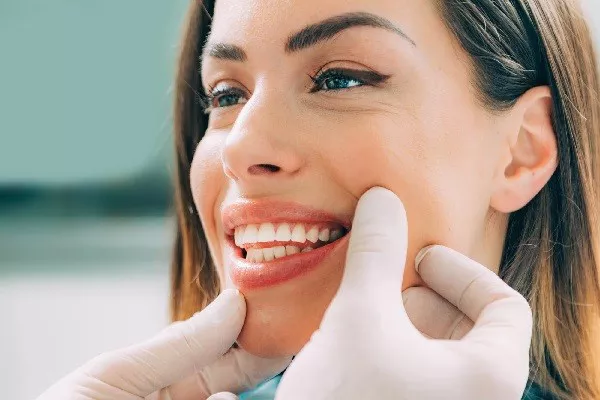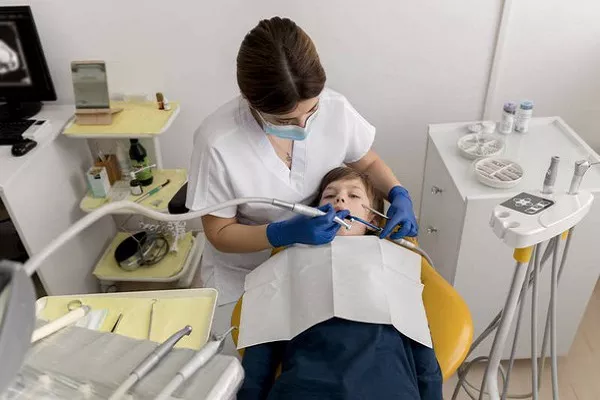Kissing, often considered an intimate gesture of affection, raises questions about potential health risks, particularly concerning oral health. One common query is whether gingivitis, the initial stage of gum disease, is contagious through kissing. In this comprehensive article, we unravel the complexities of gingivitis transmission, delving into the factors that influence contagion and the importance of oral hygiene in maintaining not just a healthy smile but also a safe exchange of affections.
I. Understanding Gingivitis: A Primer on the Initial Stage of Gum Disease
Defining Gingivitis
Gingivitis is a common and often reversible gum disease, marked by inflammation of the gums due to the accumulation of plaque—a sticky film of bacteria that forms on teeth. The condition manifests with symptoms such as redness, swelling, and bleeding of the gums, and is a precursor to more severe forms of gum disease if left untreated.
Plaque Proliferation
The primary culprit behind gingivitis is the unchecked proliferation of plaque. When plaque is not effectively removed through regular oral hygiene practices, it can harden into tartar, leading to gum inflammation and setting the stage for more significant oral health issues.
II. The Contagious Factor: Examining Gingivitis Transmission
Understanding Bacterial Transfer
Gingivitis is primarily caused by bacterial activity in the oral cavity. When an individual with gingivitis engages in activities that involve the exchange of saliva, such as kissing, there is a potential for the transfer of oral bacteria. However, the level of contagion depends on various factors, including the presence of open sores, immune system health, and the overall oral hygiene of the individuals involved.
Conditions Favoring Contagion
Contagion is more likely when both individuals engaged in kissing have compromised oral health, creating an environment where bacteria can easily be transmitted. Factors such as bleeding gums, the presence of cavities, or poor oral hygiene practices can elevate the risk of bacterial transfer.
III. Factors Influencing Gingivitis Contagion Through Kissing
Open Sores and Lesions
The presence of open sores or lesions in the oral cavity can significantly increase the risk of gingivitis transmission through kissing. These areas provide direct access for oral bacteria to enter the bloodstream, potentially leading to the spread of infection.
Immune System Health
A robust immune system plays a crucial role in preventing the transmission of infections. Individuals with compromised immune systems, whether due to medical conditions or medications, may be more susceptible to gingivitis contagion through activities like kissing.
Oral Hygiene Practices
The foundation of oral health lies in regular and effective oral hygiene practices. Individuals who prioritize brushing, flossing, and routine dental check-ups are less likely to harbor excessive oral bacteria, reducing the risk of gingivitis transmission during intimate exchanges.
IV. Communicating Health Concerns: The Importance of Open Dialogue
Transparent Communication
Maintaining open communication about oral health is integral, especially in relationships where kissing is a common expression of affection. Individuals experiencing symptoms of gingivitis, such as bleeding gums or persistent bad breath, should communicate these concerns to their partners to promote awareness and encourage joint efforts in maintaining oral health.
Seeking Dental Guidance
Couples can proactively address oral health concerns by seeking guidance from dental professionals. Regular dental check-ups not only help diagnose and treat gingivitis but also provide an opportunity for preventive education, empowering individuals to make informed decisions about their oral health.
V. Preventive Measures: Safeguarding Oral Health and Affectionate Exchanges
Prioritizing Oral Hygiene
Prevention is key when it comes to gingivitis transmission. Individuals can reduce the risk by prioritizing optimal oral hygiene practices, including regular brushing, flossing, and the use of antimicrobial mouthwashes. These practices not only combat gingivitis but also contribute to overall oral health.
Dental Check-ups and Cleanings
Regular dental check-ups, ideally every six months, are crucial for detecting and addressing oral health issues early. Professional cleanings help remove tartar, reducing the risk of gum inflammation and enhancing overall oral hygiene.
VI. Beyond Kissing: Gingivitis and Everyday Interactions
Sharing Utensils and Personal Items
While kissing is a focal point of concern, everyday activities like sharing utensils or personal items can also contribute to the potential transmission of oral bacteria. Maintaining personal hygiene and being mindful of these interactions can further contribute to preventing the spread of gingivitis.
Educating Children about Oral Health
In family settings, educating children about the importance of oral hygiene from an early age establishes a foundation for a lifetime of healthy habits. Parents can set an example, emphasizing the significance of regular brushing, flossing, and dental check-ups.
Conclusion: Balancing Affection and Oral Health in Relationships
In conclusion, the question of whether gingivitis is contagious through kissing revolves around a nuanced interplay of factors. While the potential for bacterial transfer exists, the level of risk is contingent on various elements, including oral health practices, immune system strength, and transparent communication within relationships.
Rather than instilling fear, this knowledge underscores the importance of maintaining optimal oral health as a shared responsibility. Couples can actively engage in preventive measures, prioritize regular dental check-ups, and foster open communication about oral health concerns. By striking a balance between affectionate exchanges and proactive oral health practices, individuals can enjoy the intimacy of kissing while safeguarding their overall well-being.
Does Mouthwash Help With Gingivitis
What Health Problems Can Gingivitis Cause
Does ACT Mouthwash Help Gingivitis? A Comprehensive Guide to Oral Health





























